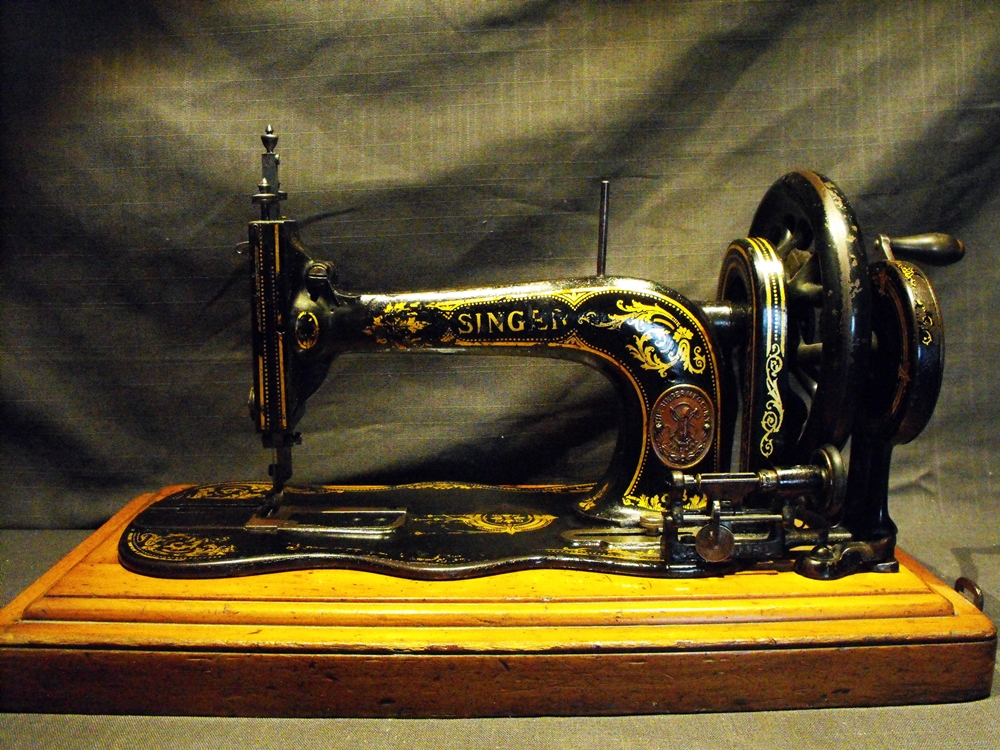
Our permanent collection of machines spans well over 140 years of manufacturing and includes many brands including: Singer, Pfaff, Elna, Husqvarna, Kenmore, Wheeler and Wilson, Winselmann, and Bernina.
We have a particular affection for treadles and hand cranked machines and enjoy using these machines when we teach classes, which always include a little history lesson.
Enjoy…

Wheeler and Wilson D9 – 1900
This was a grail machine for a sewing nerd like myself as W&W represents one of the earliest manufacturers of sewing machines, and were the most technologically advanced machines of their time.
You would think you were sewing on a modern machine, despite this being nearly 120 years old.
Read more about Wheeler and Wilson…

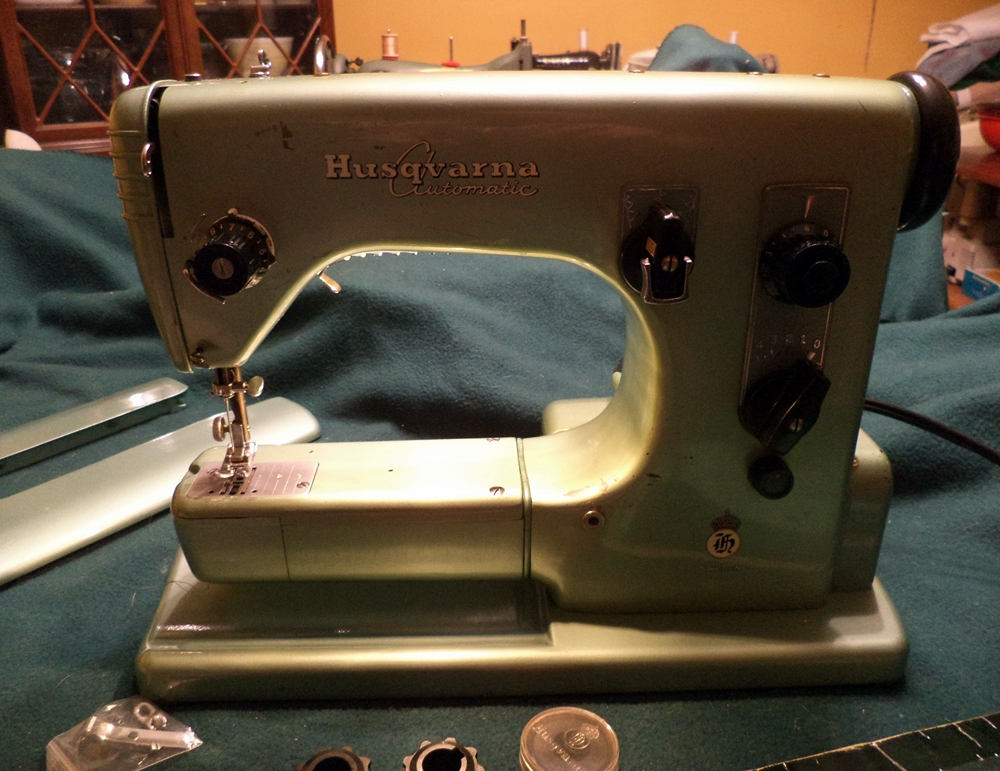
Husqvarna 21A
Manufactured in the mid 1950’s in Sweden. Considered by many to be one of the finest sewing machines ever made, featuring a rotary hook, drop feed, 20 stitches (via cams), gear reduction drive, and a 1.5 amp motor. It sews at roughly 1500 stitches per minute and will sew whatever you can fit under the foot.

Husqvarna Model 71 Rotary
Manufactured in Sweden during the 1950’s, a veritable powerhouse of a straight stitching machine with a drop feed for free motion, and a 1.5 amp motor. I think it is a little faster than it’s sister, the 21A.

Husqvarna Nordic 10
Manufactured in the late 1940’s it was a copy of a Singer 28/128 and utilizes a vibrating shuttle, like it’s sisters it came with a powerful 1 amp motor which was almost double the power of comparable Singer machines. It makes a perfect stitch and could sew a bumper on a Volvo.
You may realize by now that I have a thing for green sewing machines…

Bernina 117 treadle – 1938
This machine came to Canada by way of marriage, it’s owner purchased her in 1938 in Germany, escaped to France, and upon marrying a serviceman, was brought to Canada after World War 2.
The 117 was Bernina’s first domestic zig zag machine and it is unquestionably, the smoothest running machine I have ever had the pleasure to use.

Bernina 534 – 1958
It is not common to find a Bernina straight stitch machine since they were so well know for their excellent multi stitch models like the Record series.
This machine makes a perfect straight stitch and is so mechanically simple, it also has a drop feed and is usually reserved for doing free motion work since it also does that brilliantly.


Bernina 731 – 1965
This is the little sister to the 730 Record and differs only in that it has less built in stitches, with all the same other features, which is just fine for a simple man like myself.
The Bernina cabinet is a delight with it’s vertical lift mechanism and functions as a side board and display table for some of our other machines when the Bernina is not being put to work.

Winselmann TS High Arm – 1902
This German beauty with it’s mother of pearl and hand painted body was a gift to me from a lovely lady. It uses a transverse shuttle which might seem archaic, but it makes the most perfect stitch, and sews as fine a stitch that I have ever seen.
It is simply breathtaking to look at.


Elna 62C Supermatic – 1972
Like opening a time capsule, this machine was only used a few times and still had it’s original factory stitch sample and inspection tag.
I put the Elna alongside the Husqvarna 21 as one of the very best machines ever made; few machines are quieter, the stitch quality and range of stitches is unparalleled, and at 45 years old it does not look out dated.


Singer 431G – 1965
The 431G was manufactured in Germany and sits at the pinnacle of Singer’s production, due to patent issues they could not sell a free arm machine in North America but instead produced these in Germany.
It is also one of the rarest Singer models ever made, their cost when new was prohibitive and the examples on this side of the pond were brought back by individuals, often by armed forces members returning from tours with NATO.

Maruzen Jaguar F3
Manufactured in Japan this is the European version of the Kenmore 158.1060, these models were also sold as Frister and Rossman Cubs. We had to do some work to convert it from a 220v configuration to a 110v and it is a delight to use.
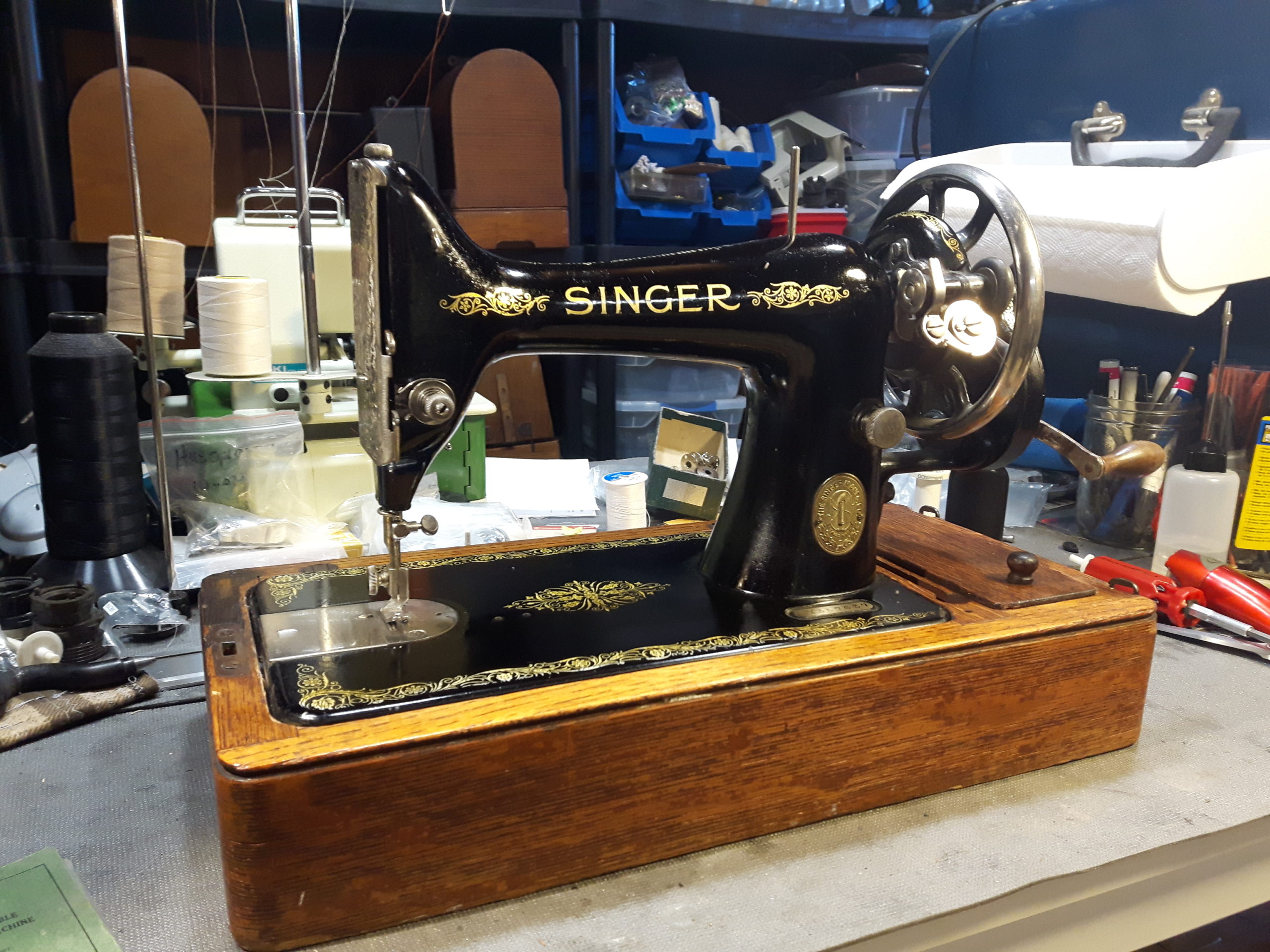

Singer 99k – Britain – 1922
The 99k was the 3/4 size version of the Singer 66, originally released in 1911 to provide for a smaller and more portable machine, and stands as one of the most successful models Singer ever produced.
The earlier 99k machines differ slightly as they use a different upper tension assembly with much smaller tension discs.


Pfaff 31 – Germany – 1936-1937
Pfaff was established in 1862 and like many other companies, started by copying Singer models, but as Germans do, they made their machines to a much higher standard. The treadle on this machine is solid oak and the machine purrs like a kitten.

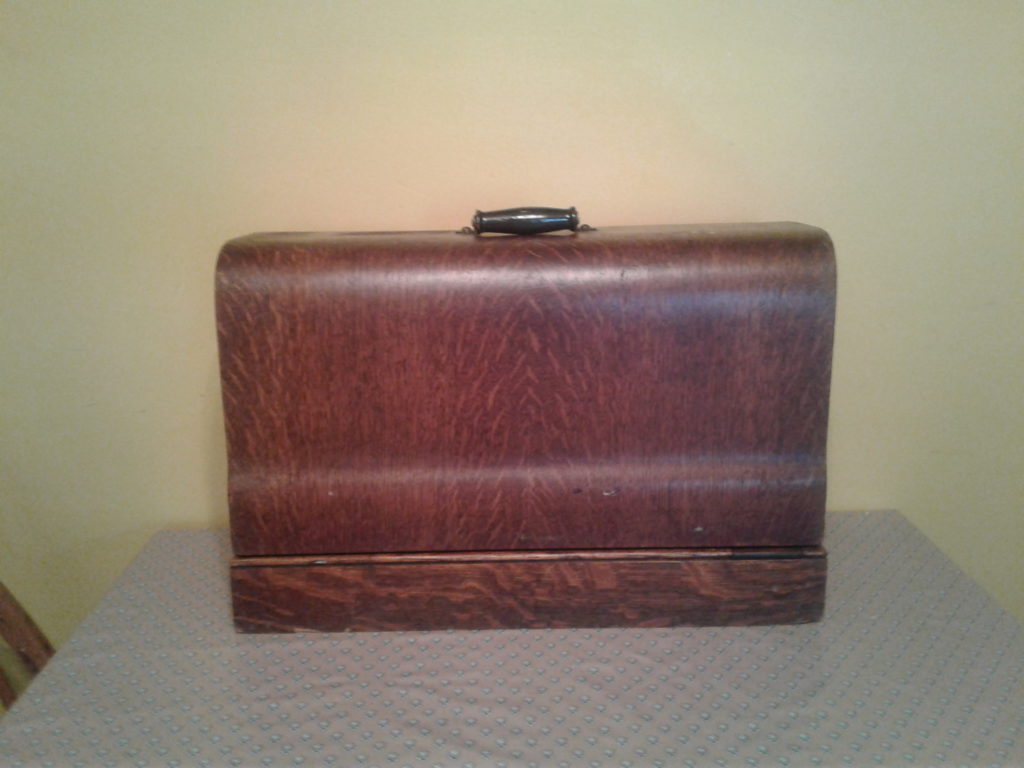
White Rotary Model 42 – U.S.A.
At one time White was second only to Singer in regard to sales, and from early in the 20th century they embraced the rotary hook design and never looked back.
These are among the smoothest and quietest running vintage machines, favoured by quilters and thread painters for their excellent stitch quality and free motion work.
White also made machines for Sears (Kenmore) and sold more machines through them than they did under their own name.


Kenmore 158.1931 – Japan- 1977
Sears has been selling sewing machines since their earliest days, utilizing manufacturers like White, Soryu, Gritzner, and even Chrysler, but their best machines came from Maruzen, in Japan.
During the mid seventies the quality of Singer machines declined sharply, and some of the best domestic machines were these Japanese made Kenmores, which I would put against Elna, Pfaff, or Bernina any day of the week.
This machine is fast, powerful, and has a super high lift foot which enables it to sew through things that would stall other machines. It has a nice set of built in stitches, has a stretch function, and can also utilize cams for more decorative stitches.
I have probably used this machine more than any other, buying it when I was a single parent on a really tight budget.
People rarely part with these machines since they are as capable as any modern machine, and a modern equivalent would cost well over $1000.00
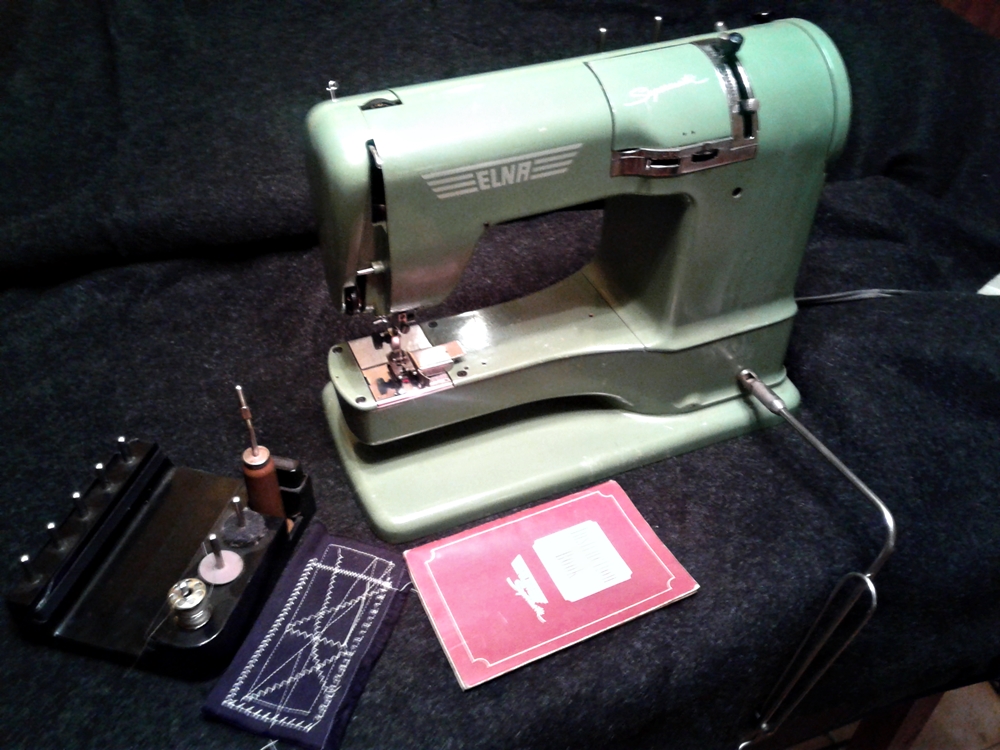



Elna Supermatic – 1952 – Switzerland
I can never say enough about Elna machines, and am always blown away that back in the early 1950’s they introduced a machine that was 30 years ahead of it’s time. It was a cam capable rotary (140 plus stitches in the 50’s), had a free arm and a case that turns into a sewing table, a feed system that is to this day unsurpassed, and the ability to sew “stretch”, sewing backwards and forwards. For quite some time the Supermatic was the finest machine on earth and true to their advertising, they would never become out dated.
The 62C Supermatic eclipsed the original by being quieter, and had built in stitches, but it does not sew any better, and is not as fast.

Singer 15-91 – 1954 – U.S.A.
I refer to her as “The Queen”, as she is a perfect example of what is the most successful sewing machine ever made.
The 15 series was produced for well over 75 years in many variations, was copied by everyone, and established a the standard 15 by 1 needle and class 15 bobbin.
The 15 -91 was the top of the line machine and came fitted with a gear drive instead of a belt, (which is the same as the 201-2), and has an oscillating hook, and a drop feed. There is almost nothing you can do to a 15 to make it stitch poorly, it will sew through a tin can and then sew silk with nary an adjustment.



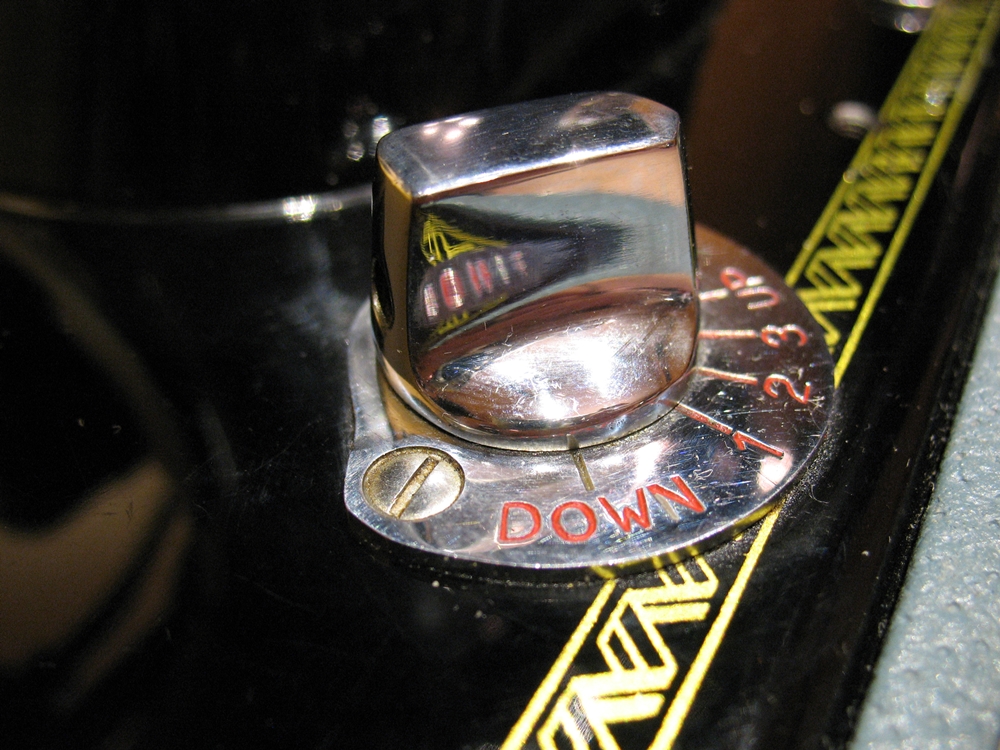

Kenmore C877.15 – 1958 – Japan
Sears sewing machines come with a prefix that tells you who made it, and in this case the C877 means that this machine was manufactured by Toyota, for the Canadian market. Maruzen made a 158.15 which is virtually identical but is found more commonly in the United States.
It took me a long time to find this machine, it was one of those white whales and was thrilled to find one in such exemplary condition.
These machines are often called clones, being a very close copy of the Singer 15 and in many respects were an improved version of that legendary machine.
Once the Japanese started entering the North American market the sun started to set on Singer and other domestic manufacturers, and they eventually came to dominate the market.


Singer 201k – 1951 – U.S.A.
The Singer 201 (there are many variants) is a legend among sewists around the world, it was the finest straight stitch machine ever produced, and for a time the most expensive machine Singer made, save for the 221 and 222.
Back in the early 50’s Popular Science reviewed the Singer 201 and said that it was a machine without any flaws, absolute perfection in a machine with a foot pedal that would run in excess of 50,000 cycles, and a drive that was smoother than anything ever made.

It is a machine that really has to be experienced to be appreciated and is one of Pearl’s favourite machines.
We have several in the works that we will be listing soon, and can be configured for a treadle, electric, or hand crank.
Singer 66 – 1923

When the Singer 66 was first released in 1902 it was a world changer, as the build quality was exceptional and no machine could lay down a nicer stitch with such smoothness and precision. This example was made in Scotland, and the decal set is unique to the model 66 made in Kilbowie.

Singer 206k – Treadle – 1954 – Scotland
This machine started my love for the mid fifties “Swing Needle machines which were originally developed in Germany (late 1930’s), with a design that is unique compared to any Singers that came before or after.
This series of machine had a vertical rotary hook, the later 306 and 319 were capable of using cams and the 319 had built in stitches as well. The stitch quality is outstanding and the rotary hook system makes them extremely smooth.
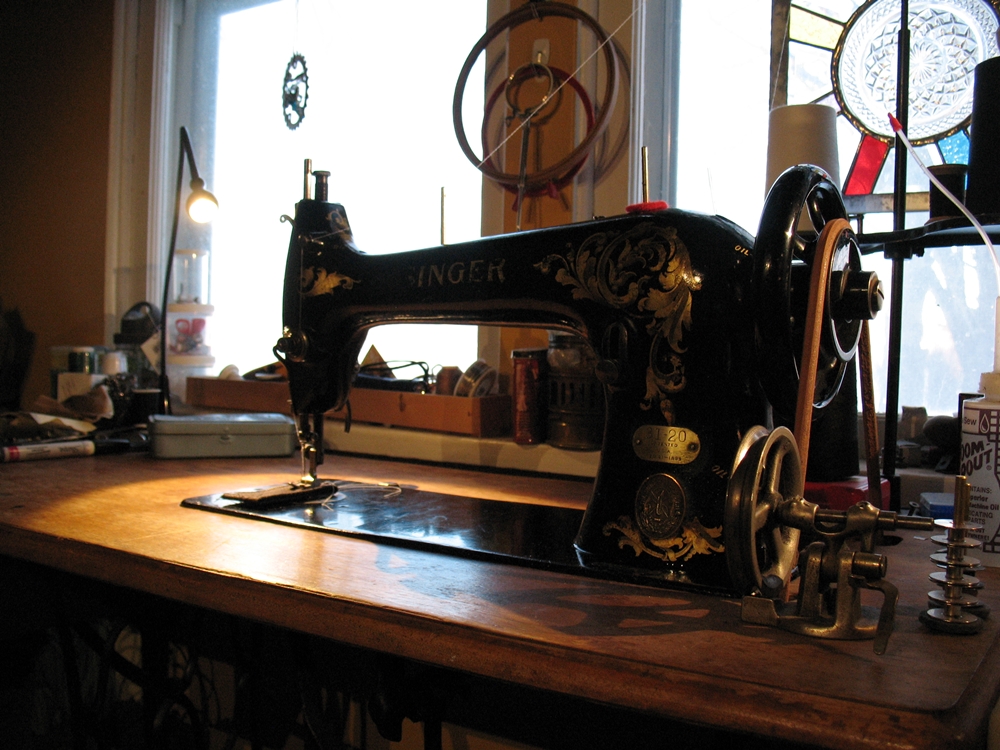

Singer 31-20 – 1920 – U.S.A.
“Marie Louise” is named after the lady who owned her and is a wonderful example of an early Singer industrial tailor’s machine, at 108 years old she stitches as well as any new machine and purrs like a kitten.

Bernina 125 – Early 1950’s – Switzerland
It took us many years to find this machine, notable because it was the first portable machine with a free arm and a zig zag function, it sews in nearly complete silence and with outstanding precision and stitch quality.

In 1951 Singer introduced their first new slant needle machine, the incomparable model 301, which used the same brilliant geared drive of the 201 and 221, added a more powerful motor, and a vertical rotary hook which is virtually identical to the Featherweight 221.
The 301 sews at speeds in excess of 1500 absolutely perfect stitches per minute, with nary a vibration and is a full size model that only weighs 14 pounds, being cast aluminium.
Many owners of the 221 have tried a 301 and never looked back.

The Singer 319 is in the same family of machines as the 206, 306, and 320, using a vertical front facing rotary hook, and were initially designed to be marketed outside of the United States. these machines are powerful, fast, and ridiculously smooth and lay down a perfect stitch.
The 319 has built in stitches that are selected with the keys on the top and is also capable of using 3 series cams to create a staggering number of patterns and designs, as the cams can be used in combination with the built in stitches.
Like my 206, I have upgraded the bobbin case so it can use 15 by 1 needles, and swapped in a high speed motor which makes this machine run faster than my 301 (1500spm).

Bernina 717
This is my most beloved machine as it belonged to my mom, and was the last machine she ever owned, and quite surely the nicest machine she ever bought.
Like most things my mom bought things used, and know she paid $250.00 for this machine from a local dealer many years ago, at over 50 years old it still purrs like a kitten and makes a wonderful stitch, as one would expect from a Bernina.
I will hand this machine down to someone in our family when I can no longer thread a needle.
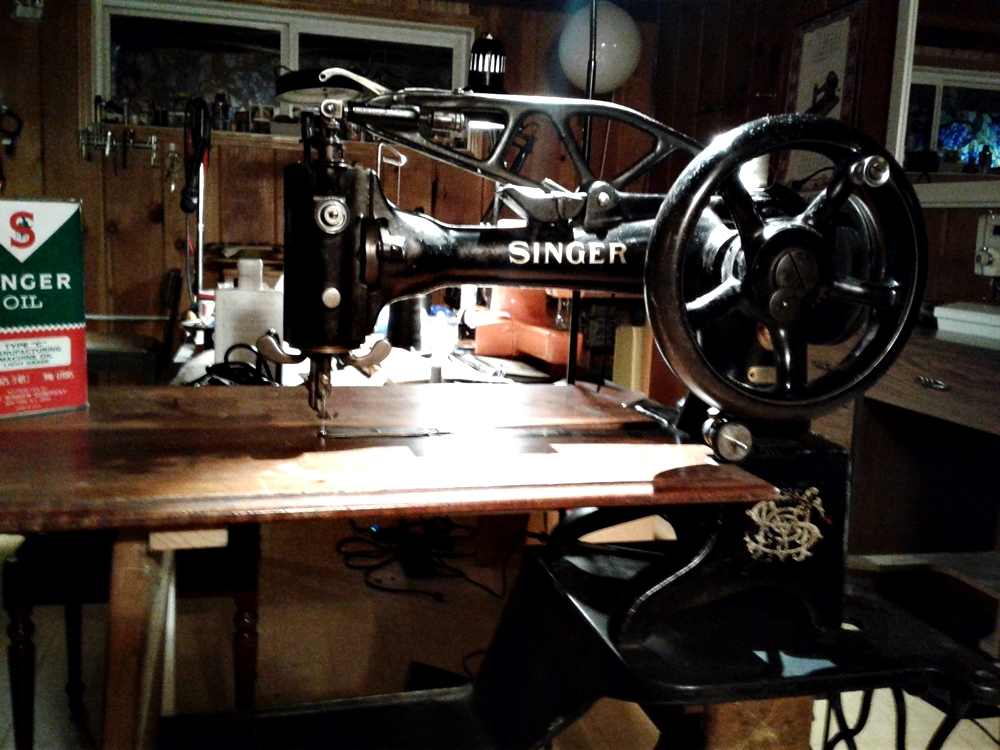
Singer 29K-58 – The Singer 29k is one of Singer’s earliest and most successful models, having started production at the turn of the last century and still being copied today, as it it is the standard for cobblers and craftsmen everywhere.
The long narrow free arm allows it to sew in tight spaces and one can slip a full length boot over the arm, one of it’s best features is it’s ability to sew in any direction on light to medium weight leather. It is a walking foot with no lower feed and a rather small bobbin as it was designed for large runs of sewing, but rather for smaller repairs.


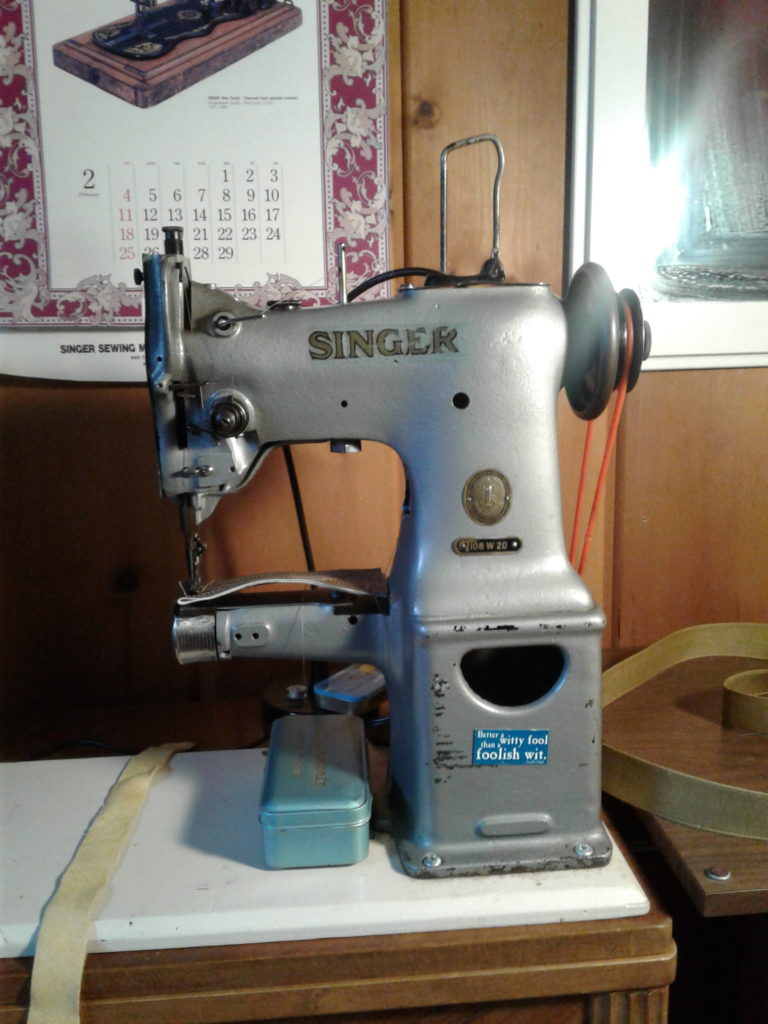
Singer 108-20 Binder – This machine came to us as a head mounted to what looks to be an old cupboard door with no motor, having been removed from it’s industrial base. Designed for industrial binding work on medium weight fabrics it has a walking foot and small cylinder arm, and will use a #18 needle and a maximum thread of T70.

I mounted a 1.5 amp Pfaff motor and made a belt which is more than sufficient for a machine that will now be used for lighter work, and not be running extended shifts, and the current set-up lets me move the machine around and bring it to the work I am doing.
I also modified the needle plate so it will function as a normal cylinder arm machine, the mount for the binder left a ridge that interfered with lighter fabrics.

Singer 28-9: This is a less common machine as it was a transitional model between the 28 and 128, it still has a thumb release on the upper tension and no shuttle ejector and the placement of the Singer badge covers where a lower casting was ground off. A high mounted winder was installed by Singer.

Necchi Supernova – 1955:
It took me many years to find a Necchi Supernova as they are not a common machine, but when you make up a list of the greatest machines ever, this machine deserves to be on that list.
This was the finest and most expensive Necchi ever made and back in the 1950’s they were tested by Popular Science and deemed to be without flaw, they are almost silent in operation and the cam system allows users to make their own custom cams, which include stretch stitches.
It came with it’s original cabinet and accessories, the cabinet has an ingenious lift assist mechanism to aid in raising and lowering what is a rather heavy machine… and also offers almost 70 inches of working space.

Stay tuned as we will be posting some videos of this machine in operation, is is a marvel of mechanical engineering.

Singer 320K23 – Kilbowie Scotland
One of the rarest machines in our collection is this mid 1950’s Singer 320K23, as these were never sold by Singer in North America and only sold in the U.K., Australia, and Europe and even then, production was very low.
This machine was brought over in person by a gentleman who made regular trips to London in the 1950’s and was a gift for his wife.
It is the same basic machine as the European 306K that does not use cams, but was redesigned to incorporate a removeable bed to turn it into a free arm machine.

The stitch quality is phenomenal, it does a straight stitch and zig zag.


Singer VS3 – 1889
Singer introduced their vibrating shuttle machines in 1885 with the VS1 (fiddlebase) and the VS3 introduced a rectangular bed while the mechanical aspects of the machine remained virtually unchanged. Singer would continue production of these machines right into the 1950’s with the 27, 28, 127, and 128 models and even though the design was old, they remained a top seller.
This machine is a work in progress as it was in terribly poor condition with a broken handwheel, missing finish and pitting on the bed, and very rusty. We turned and polished a new handwheel in our lathe and fitted that which greatly improves the look of the machine.

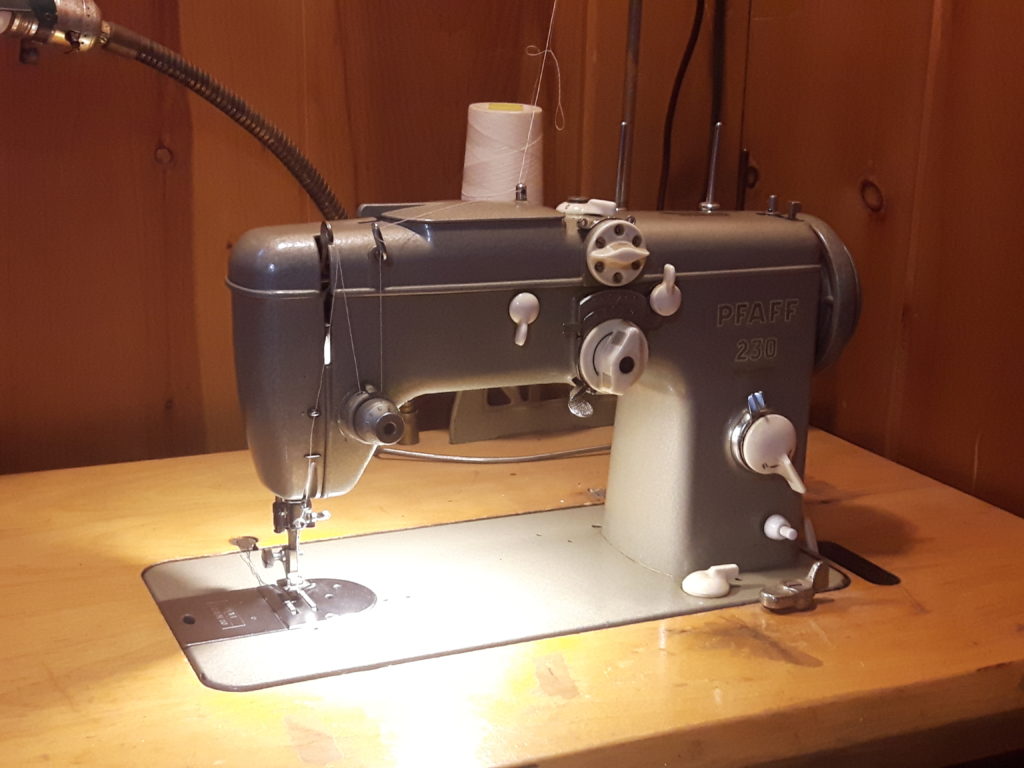
Pfaff 230 Automatic – 1955
Certainly one of the greatest machines ever made by Pfaff, or anyone for that matter was the model 230, a rotary stitch machine with a wide range of built in decorative and utility stitches.
Mounted in a Pfaff commercial table with a 3 amp motor, this was a professional level machine capable of sewing at speeds up to 2500 stitches a minute with nary a vibration, and when adjusted for inflation it sold for the equivalent of over $6000.00.
Follow us on Facebook